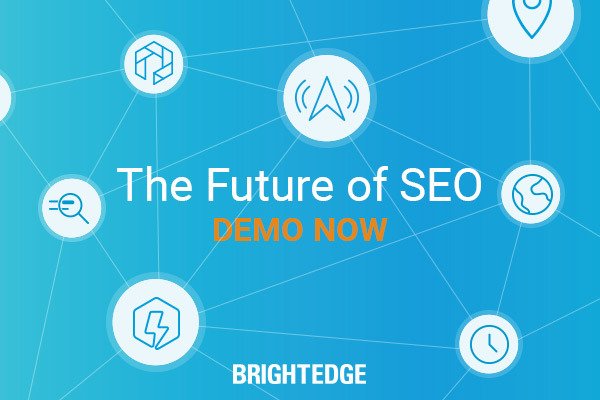 Google has appointed noted artificial intelligence expert John Giannandrea as the new head of its search team following the retirement of Amit Singhal on February 26, 2016. The changeover has been widely interpreted as signaling increased reliance on machine learning in the Google SEO algorithm, with ultimately widespread implications for Google SEO best practices.
Google has appointed noted artificial intelligence expert John Giannandrea as the new head of its search team following the retirement of Amit Singhal on February 26, 2016. The changeover has been widely interpreted as signaling increased reliance on machine learning in the Google SEO algorithm, with ultimately widespread implications for Google SEO best practices.
John Giannandrea, a well-known Silicon Valley veteran, joined Google’s engineering team in 2010 with the acquisition of his startup Metaweb Technologies, Inc.
Artificial intelligence at Google
As head of machine learning at Google, Mr. Giannandrea has already had significant impact, working on the self-driving car; leading development of the Knowledge Graph, Google’s huge database of people, places and things; and more recently overseeing the release of RankBrain, Google’s algorithmically based content ranking system announced in October 2015.
Historically, Google’s algorithm updates have been the product of hundreds or thousands of engineering hours spent studying Google’s enormous store of search data, writing new code and analyzing test results. Most of Google’s search algorithm today is the product of human intelligence applied to a specific problem, such as, “How can we tell what a given page of HTML is about?” and, “How high should this page rank in comparison to other pages we have indexed on the same topic?”
Even though the lines of code in the Google algorithm or in a new update are a tightly held secret, it has long been understood that there are known best practices for Google SEO, often because Google itself has described these best practices in Google’s Webmaster Guidelines.
RankBrain changed Google SEO forever
The release of John Giannandrea’s RankBrain in October marked a stark departure from the era of human-written code. RankBrain is a product of machine intelligence, developed principally to analyze and respond to the 15% of daily queries that Google has never seen before, typically long search phrases spoken into a smartphone.
RankBrain uses semantic search to analyze the query, produces a search engine response page, and then analyzes the searcher’s resulting click-through behavior to improve its organic rankings next time for a similar query. All this happens in milliseconds without human involvement. Once Google’s engineers released RankBrain, machine intelligence was put in charge of these queries, and almost immediately Google reported that RankBrain had become the search engine’s third most important ranking factor.
With RankBrain, Google SEO began to change forever. Suppose you want to know why you rank #9 for one of these long mobile search phrases, instead of #1. Even a Google engineer with access to the code base may not be able to tell you, because the algorithm itself produced the ranking based on the data currently at its disposal.
Best Google SEO practices in the future
And this is likely just the beginning. There is ample room for more artificial intelligence in the Google algorithm. Think of speech and image recognition. Machine learning plays an important role in Google’s improving ability to understand and respond to spoken queries (imagine being able to understand the same English phrase spoken by a native of Mississippi or a native of Yorkshire in the United Kingdom or of Uttar Pradesh in India).
And as for image recognition, you may someday not really need alt tags anymore because Google will be able to recognize and label every image on your website. And you may not needs tags or a transcript of your video because the Google algorithm can understand the image flow and dialogue.
Google SEO best practices may change in unforeseen and unpredictable ways as the algorithm makes more decisions on its own without human direction. In some cases, Google’s engineers may be able to help us understand what is happening, but in other cases specific search rankings may be a mystery.
Big Data analysis and recommendations will be key
To make sense of this world, you will need access to a Big Data content marketing platform that collects data for a huge portion of the web and reports on the correlations that it identifies as influencing search rank.
For example, in June of 2014, BrightEdge published a study called The Mobile Opportunity showing that 62% of the search results on Google differed depending on whether the search was launched from a mobile or desktop device. This was the first time that hard data confirmed what some had only suspected, and it was made possible by the vast amount of data being collected and reported on by the BrightEdge platform.
The new era of machine intelligence in the Google algorithm will mean that you need the visibility that BrightEdge can give you to make sense of a ranking system that no engineer can fully understand.
John Giannandrea’s promotion signals the flowering of a new era of Google SEO when marketers can only get organic visibility if they have access to a Big Data platform that can see and understand what is happening with search rank across the web, and provide clear recommendations on how to optimize content for this new world.
The good news is that in this age of ever more powerful algorithms, you have the BrightEdge algorithm on your side. That is why we invest millions of dollars every year in our technology: to provide you with the information you need to succeed in the exciting new era that has only just begun.
